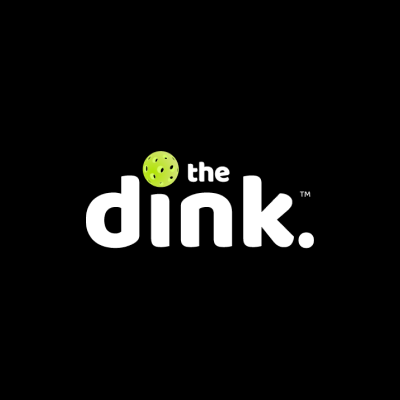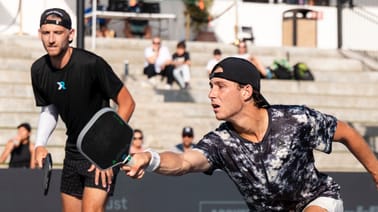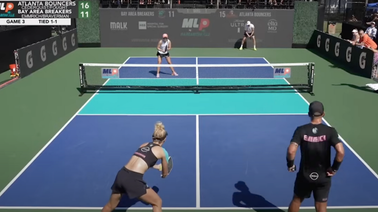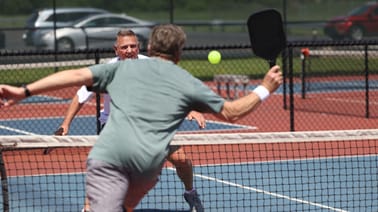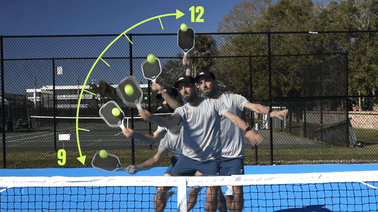
Deciding who, when, and where to attack occurs within a hundredth of a millisecond, as does knowing who, when, and where not to attack.
Recognizing "tells" in that split second takes practice and often happens unconsciously. You'll learn to pick up on multiple cues that lead to the highest percentage decision.
Most amateurs: "See ball, hit ball...hard!" Avoid this. In a given attack, certain cues can indicate the highest percentage shot.
Scenario:
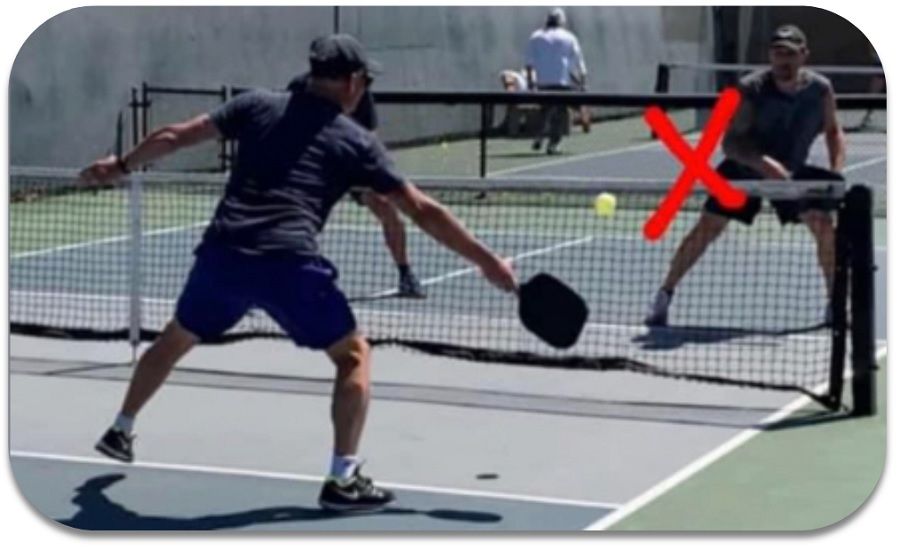
The attacker's lean can reveal vulnerability to a counter-attack. He's reached far enough to the side that his left foot has come off the ground—his momentum is ultimately going to fall to the right, leaving him vulnerable to a counter-attack.
By examining the posture of the attacker’s opponent, we can see that he is anticipating an attack down the line (because the attacker is reaching wide). This is probably the correct read. His weight and his paddle have already shifted to respond with a backhand counter, and he’s locked and ready.
But the attacker also sees that the middle looks open. However, the cross-court opponent's left foot is already over the centerline preparing to cover - he might be baiting a middle attack.
If I'm attacking here, I'll need to see this, and before starting this hands battle, in that hundredth of a millisecond, I want to know three things:
- Does my opponent have a two-handed counter? If he does, I'm not firing this.
- Is he a lefty? If yes, I'm not firing this.
- Can I recover for my re-counter follow-up?
If you want to help solve pickleball's biggest problem – lack of courts – while making money, we've got the solution for you.

Make money by listing your home court for rent. Learn more here.
My cross-court opponent would have to have a weak one-handed counter, be a natural resetter, or I'd need to know I can effectively hit a great low roller for me to have confidence in winning this exchange through the center.
Lastly, the attacker needs to have a partner with above-average hand speed because, from this ball position and angle of attack, it could easily be countered to him.
I know, I know... It's challenging to process all options, but with practice, decision-making becomes faster and more intuitive. This skill develops after investing hours in intentional rehearsal and training.
Your biggest and easiest competitive advantage comes from doing this type of work. Your opponents, like 98% of those reading this, will not want to put in this level of effort. They lose. You win. Next.
(Via Senior Pro Dayne Gingrich, edited by ChatGPT)
We send our newsletter subscribers valuable pickleball tips like these three days a week. Up your game by subscribing now:


